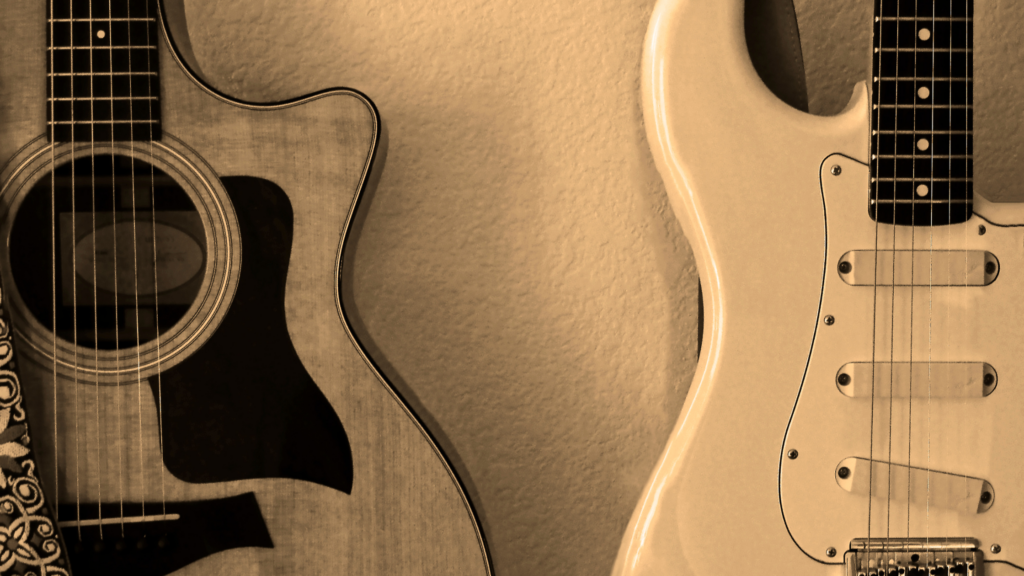The history of the guitar is as dynamic as the music it creates. This beloved instrument has journeyed through centuries, transforming from its classical beginnings into the electrifying powerhouse of modern music. Whether you’re a musician or simply an enthusiast, understanding the guitar’s evolution offers a deeper appreciation for its versatility and enduring appeal.
Let’s explore the fascinating timeline of the guitar, from its early origins to its electric revolution.
1. The Early Roots of the Guitar
The guitar’s story begins thousands of years ago, with stringed instruments found in ancient Mesopotamia, Egypt, and Greece. Early versions, like the lute and oud, laid the groundwork for the guitar’s development. The European Renaissance saw the rise of the “guitarra latina,” a precursor to the modern classical guitar.
2. The Birth of the Classical Guitar
By the 18th century, the guitar took on a form closer to what we recognize today. Spanish luthiers like Antonio Torres Jurado standardized the design of the classical guitar, giving it a larger body and improved sound projection. The nylon strings commonly used today replaced traditional gut strings in the 20th century, making classical guitars more durable and accessible.
3. From Steel Strings to Acoustic Innovation
In the 19th century, steel-string guitars emerged, offering brighter tones and greater volume. These innovations were driven by American luthiers like C.F. Martin, who pioneered X-bracing techniques. This era also marked the birth of iconic acoustic guitar brands like Martin and Gibson, which remain industry leaders today.
4. The Invention of the Electric Guitar
The 1930s ushered in the electric guitar, revolutionizing music forever. Pioneers like George Beauchamp and Adolph Rickenbacker introduced the first electrified guitars with magnetic pickups. Later, Leo Fender and Les Paul refined these designs, creating legendary models like the Fender Telecaster and Gibson Les Paul.
Electric guitars allowed musicians to explore new sonic territories, paving the way for genres like rock, blues, and jazz. By the mid-20th century, the electric guitar became an emblem of rebellion and innovation.
5. The Guitar in Modern Music
Today, the guitar continues to evolve, embracing new technologies like digital modeling and effects. From classical to electric and acoustic hybrids, the guitar’s versatility ensures its place in virtually every musical genre. Artists like Jimi Hendrix, Eric Clapton, and Paco de Lucía have solidified its legacy as a tool of artistic expression.
The history of the guitar is a rich tapestry that reflects humanity’s creativity and cultural shifts. From its humble beginnings in ancient times to the electrifying innovations of the 20th century, the guitar has shaped music and inspired generations. Whether you prefer the gentle tones of a classical guitar or the raw power of an electric, the guitar’s journey is a testament to its enduring magic.
External Sources:
- Learn more about ancient stringed instruments on The Metropolitan Museum of Art.
- The evolution of the lute is detailed on Lute Society.
- Dive into Antonio Torres’ impact on guitar design on Guitar Salon International.
- The history of nylon strings is covered on D’Addario Strings.
- The history of Martin guitars is outlined on Martin Guitar’s official site.
- Learn about Gibson’s contributions on Gibson Guitars.
- A deep dive into the creation of the electric guitar can be found on Smithsonian Magazine.
- Fender’s history is chronicled on Fender’s official website.
- Check out modern innovations in guitar tech on MusicRadar.
Read about iconic guitar players on Rolling Stone.

